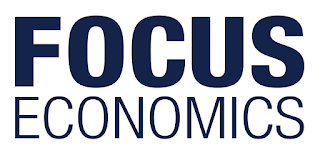Economic growth appears on track to record a stellar performance in Q2, fueled by strong business investment, tax cuts and an ever-tightening labor market boosting consumer spending. In May, the unemployment rate hit a new low, and growth in retail sales accelerated as consumer confidence remained near a historic high. Furthermore, housing starts picked up in the same month, helped by rising wages and lower taxes boosting household incomes. Survey data for May indicates the private sector has so far been unfazed by current tensions with trade partners, although President Trump’s rapidly escalating rhetoric vis-à-vis China in past weeks could prove damaging to business confidence. The month ahead might represent a critical junction, as new restrictions on investments between Chinese and American firms are set to be unveiled on 30 June, while reciprocal tariffs with China and retaliatory measures from Canada will take effect in early July.
In 2019, growth is seen moderating to 2.4%. Inflation hit a 5-year high of 2.8% in May, up from 2.5% in April. The 12–13 June FOMC meeting communiqué suggests the Fed is satisfied with the current underlying inflation trend and might tolerate inflation overshooting its target for a limited period. Inflation is likely to remain strong in the near term thanks to buoyant growth, before moderating next year. Our panel sees inflation averaging 2.5% in 2018 and 2.2% in 2019.
The Federal Reserve raised the federal funds rate by 25 basis points to 1.75%–2.00% at its 12-13 June FOMC meeting. It also raised its median projection from three hikes to four in 2018, meaning two more rate increases are now the baseline scenario for this year. This assessment is shared by our panel, which expects the federal funds rate to end 2018 at 2.44% and 2019 at 3.06%. An increasing interest rate differential coupled with strong economic data pushed the dollar higher against main trading partners’ currencies in June. On 22 June, the dollar index traded at 94.5, a month-on-month strengthening of 1.0%.



